What is pampas grass? Invasive species (I)
We explain that what is pampas grass? Grass of the Pampas, plumage or reed are some of the names by which Cortaderia Selloana is known , a large grassy plant considered one of the important invasive species in several countries, including Spain.
Common name: Pampas grass, Duster, Dusters, Carrizo de La Pampa
Scientific name: Cortaderia selloana
Location: Outdoor
Light: Full sun or partial shade
Characteristics
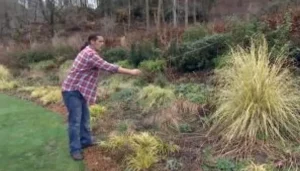
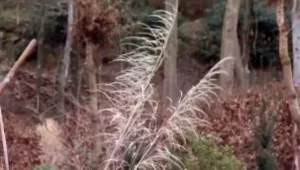 Its inflorescence results in dusters that are very decorative.
Its inflorescence results in dusters that are very decorative.
It is considered an invasive plant. However, the ones we have in this garden are a hybrid that cannot reproduce by seed.
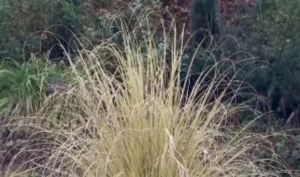 The peculiarity of hybrids is that their seeds, which come out in thousands of these inflorescences or dusters, will not be able to perpetuate themselves or germinate spontaneously. The same happens, for example, with the hybrid tomatoes that we buy in the supermarket.
The peculiarity of hybrids is that their seeds, which come out in thousands of these inflorescences or dusters, will not be able to perpetuate themselves or germinate spontaneously. The same happens, for example, with the hybrid tomatoes that we buy in the supermarket.
Detail
This variety is a hybrid variety, but in its day this plant was brought from Argentina, and the conventional grass has become a real headache. Since it is a plant that is invading the entire north of the peninsula.
In areas such as slopes, or next to highways, this plant has been germinating and reproducing everywhere. In many places, attempts are made to eradicate it by spraying herbicides .
Iñigo Segurola, in particular, is not in favor of eliminating any plant because he considers it invasive , much less with these methods.
This plant came because the human being transported it, it arrived in Europe and has found a favorable environment to survive.
We have created a global village where there are no borders, plants come and go largely through the action of man.
It is what the human being has created and it is what we deserve.
A championship grass
Cortaderia is native to the Pampa region, a prairie with a temperate climate and high humidity located in the northeast of Argentina, in Uruguay and the southern part of Brazil. The plant reaches a surprising size for a grass, up to three meters high the clump of leaves and several meters more the inflorescences (groups of flowers that grow on the same stem), which consist of a vertical stem topped by feathery-looking flowers.
These inflorescences facilitate the wind transport of the seeds, being able to be displaced several kilometers away, an aspect that contributes to their invasiveness. Another issue that explains the ease with which this plant expands is the large number of seeds released by each plant, exceeding one million throughout its life. The nightmare of any pollen allergy.
A characteristic common to all grasses is the accumulation of silicon on the edges of the leaves, to reduce their palatability and prevent herbivores from eating them. For this reason, herbivores that feed on grasses have developed teeth with particularly thick crowns, capable of resisting wear when chewing the leaves. It is for this reason that if we grab the leaf of a grass and pull it we can cut our hand.
In the case of Cortaderia (and this is where its scientific name comes from), the accumulation of silicon is visible to the naked eye on the leaves and causes them to have great rigidity, resulting almost inedible for any herbivore. This is one of the reasons why it is a problematic invasive species, since in the areas where it is introduced it lacks predators.
Pampas grass as an invasive species in Spain
It is not clear how the species was introduced in Spain. In other countries such as the United Kingdom it was cultivated due to its ornamental beauty, being appreciated as a garden plant. There is a theory that it was accidentally introduced into our country during the post-war period, when large quantities of cereals were imported from South America and some seeds of the Pampas grass were present among the cereal grains. What is certain is that its expansion began in the middle of the 20th century in the northwest of the peninsula.
Thanks to the similarity of the climatic conditions between the Pampa and the north of Spain, having a mild climate and abundant rainfall, the species spread in a matter of decades from Santander (where there are records of its presence in the 50s) to the Country Basque, Asturias and Galicia. Precisely in Galicia there was a quite controversial population of this species, as it was planted in the median between the lanes of the AP-9.
The medians and ditches of the roads are excellent areas for the development of plants that require humidity, as rainwater concentrates there that cannot filter through the asphalt. Thus, Cortaderia grew smoothly along the highway, later expanding to nearby wetlands and any uncultivated meadow areas.
Measures for the control of Pampas grass (Cortadeira Selloana)
In recent years, awareness about the problem of biological invasions (and in the specific case of this plant, because it was exaggerated to see entire meadows covered by huge bushes topped with showy flowers) measures are being taken to control it. In some countries, given the large size of the plants and the density of the populations, it was decided to set fire to the most affected grasslands.
In addition to being a risky measure, since fire can get out of control and cause serious damage to nature, the roots of the plant survived and in a short time the plant sprouted again. The fire resistance is a feature common to many invasive species such as eucalyptus or acacia, to thus obtain an added advantage over native species, which exceptions are not prepared to withstand fire (the cork and oak, protected by a thick bark, they are indigenous trees that exemplify this).
Other control mechanisms for Pampas grass include uprooting plants, which requires digging shovels when bushes have grown too large, and the use of herbicides. This last method is controversial in wetland areas, since many of the herbicides used (such as glyphosate) affect any plant species indistinctly, and by spreading in watercourses they can negatively affect native plants.
A weak point of Cortaderia , so to speak, are its inflorescences, since cutting them avoids the dispersion of the seeds, although this does not completely eliminate the problem by not ending up with the plants.
Being included in the list of invasive species in Spain, the sale of Cortaderia is prohibited in our country (except in the Canary Islands). Invasive plant species are frequently introduced as ornamentals, having an exotic appearance that makes them attractive. However, it must be borne in mind that some exotic species can cause serious environmental problems if they naturalize and displace native species.
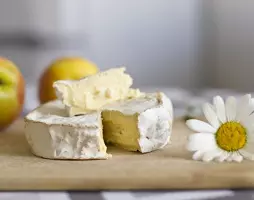

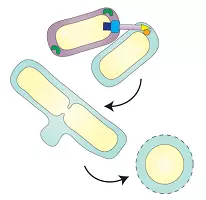

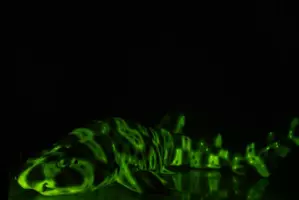
One Comment